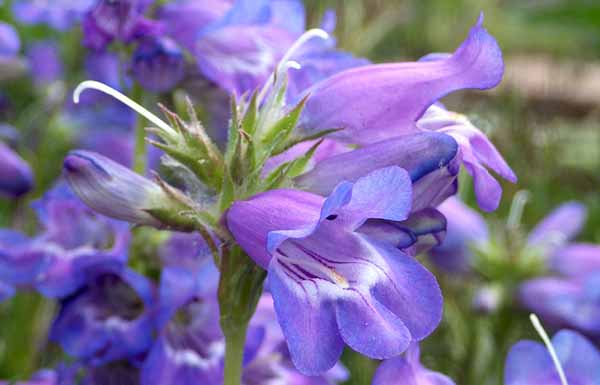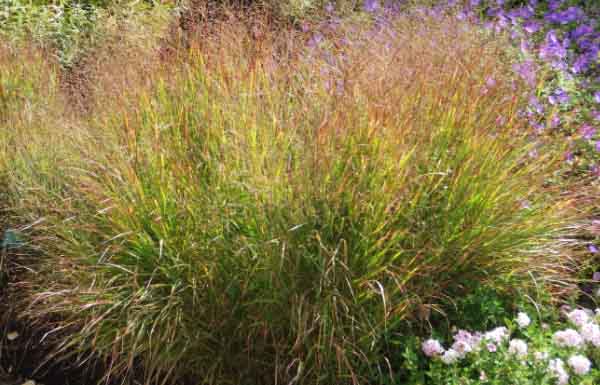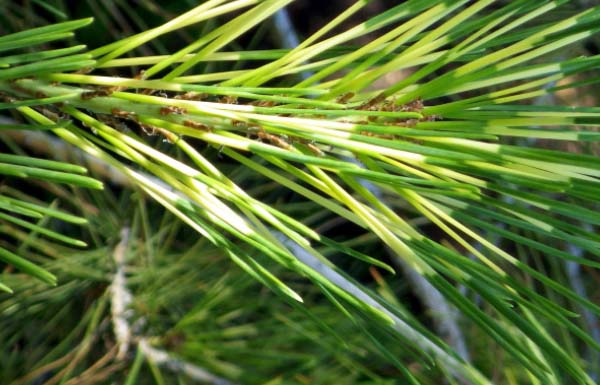
Red Butte Garden is a museum of living plants. Plants are collected for their horticultural merit, use in research and conservation, and for their historical value. Each plant is given an accession number and carefully curated within the collections. To learn about our collections and displays, please click on the corresponding images below.
Red Butte Garden has several types of plant collections and each accession falls into one or more of the following categories:
- Arboretum: A collection of trees, held jointly on the University of Utah campus and Red Butte Garden.
- Ecological: Plants native to Utah.
- Ethnobotanic: Plants that have a history of use by humans.
- Geographic: Plants with horticultural value from other states or countries that perform well in our climate.
- Research/Conservation: Threatened, rare, and endangered species.
- Taxonomic: Represents species, varieties, and cultivars of select taxa.
Aside from our impressive collections, we also maintain a variety of ornamental displays. Displays are plants that are not included in our curated plant collections. We do not keep the same records on them. Rather, they are used to enhance our landscape plantings. Our most noteworthy displays include: Daffodils, Miniature Bulbs, and Succulents.
Daffodil Display
Red Butte Garden presents a stunning display each spring of over 500,000 bulbs (as of Dec 2018), 239,000 of which are daffodils. Daffodils were chosen as a prominent component due to their long lifespan, wide diversity of color, size and bloom type, and dislike by wildlife such as deer and squirrels.
The Red Butte Garden daffodil display started in 2003 in the Four Seasons Garden. The Four Seasons Garden, situated on a hill facing the Visitor Center, is the first thing that visitors see when they enter the Garden. This garden space, composed of large masses of plants best appreciated when viewed from a distance, lends itself well to a massive display of daffodils, with varieties chosen that, due to their size and color, stand out from a distance.
In 2013, Red Butte Garden was recognized as an official Daffodil Display Garden by the American Daffodil Society. Our display represents all 13 recognized divisions, which are based on floral parts and species derivation.
Read more about our Daffodil Display
Rose Collection
Roses are among the most loved flowers in the world. There are about 150 distinct species, all found only in the northern hemisphere. Modern rose varieties began to appear in the late 18th century when repeat-blooming roses from China were introduced to Europe. Today, there are a wealth of roses available from which to choose, from hybrid teas and floribundas to shrub roses and groundcovers, from climbers and ramblers to miniatures. Old roses and species roses also add their beauty and charm to gardens.
At Red Butte Garden, the purpose of our Rose Collection is to display a wide variety of roses emphasizing a diversity of ornamental characteristics such as: flower color, form and fragrance; fall/winter interest, plant size, form and texture.
As our Collection grows, we strive to obtain species and cultivars of all rose classes that are winter-hardy and with an emphasis on disease resistant to showcase the variety of roses that thrive in Utah.
Lilac Collection
Native to southeastern Europe and eastern Asia, Lilacs belong to the genus Syringa. The name Syringa is derived from the ancient Greek word “syrinx,” which means “hollow stem,” referring to the straight, hollow young branches that were once used to make flutes. While in the wild there are only 12 species of Lilac, worldwide horticulturists have created over 2,000 named hybrids and cultivars, most of which arise from the Common Lilac, Syringa vulgaris. Lilacs belong to the same family as the olive, ash, forsythia, and jasmine.
Lilacs are trees or shrubs that range in size from 3 feet to 35 feet depending on the species or variety. Most varieties produce heart or spade-shaped leaves arranged in pairs along the stem, with a few species producing dissected leaves or leaves that encircle the stem.
Lilacs are located throughout Red Butte Garden, with the greatest diversity of the collection along the bottom of the Floral Walk, a few re-blooming varieties in the Water Conservation Garden, and some impressive tree lilacs in the Fragrance Garden meadow. The best time to view this beautiful and fragrant collection is from mid-April to mid-May.
Penstemon Collection
Penstemon, commonly known as beardtongue, is one of the largest genus of flowering plants endemic to North America. Containing roughly 250 species, they are found naturally in every state except Hawaii, with the most species being found in the Western United States. With 100 species, Utah is home to the highest number of native Penstemon, including approximately 20 species that are rare or threatened. Their habitat ranges from alpine to hot desert conditions.
Penstemon species are known for their attractive, long lasting, tubular flowers that come in a variety of bright colors, from the less common white and yellow to the more common blue, purple, pink, and red. Beardtongues are able to sustain a high number of pollinators due to the large volume of nectar they contain. The diversity of flower shapes, colors, and arrangements reflect individual species specializations to attract specific pollinators, including bees, butterflies, and hummingbirds.
Like Utah, here at the Garden we have a diverse selection of Penstemon species including native species, rare taxa, hybrids, and cultivars. Our collection can be seen throughout the Garden, with the majority planted in the Water Conservation Garden and the Visitor Center Entrance Gardens.
Ornamental Grass Collection
At Red Butte Garden, the purpose of our Ornamental Grass Collection is to display a wide variety of non-invasive ornamental grasses and grass-like plants, emphasizing the diversity of taxa, size, form, color, and texture.
As we continue to expand and diversify our collection, we seek to increase the diversity of genera, species, varieties, and cultivars that demonstrate the variety or ornamental grasses available for the home landscape and how they perform in our region.
Conifer Collection
Conifers are woody plants that bear cones. They range in size from the tallest tree in the world (Sequoia sempervirens or Coast Redwood) to small dwarf varieties. Conifers are also among the oldest known trees, with Methuselah, a Bristlecone Pine from California, estimated to be around 5,000 years old. Most conifers are recognized by their needle-like foliage and are often described as evergreens, however, some varieties such as Larches and Bald Cypress, are deciduous, losing their leaves in the fall.
At Red Butte Garden, the purpose of our Conifer Collection is to display a wide variety of conifer and other gymnosperm taxa emphasizing the diversity of size, form, color, and texture and to showcase the assortment of conifers available for use in the home landscape.
As we continue to expand and diversify our collection, we seek to increase the diversity of Utah native species, water-wise species, unusual or rare forms, and miniature and dwarf varieties.
Red Butte Garden has been designated as a conifer reference garden by the American Conifer Society. We were selected because of an exceptional collection of coniferous taxa and a continuing commitment to their display and preservation. As of 2017, Red Butte Garden is home to 216 different conifer taxa.












